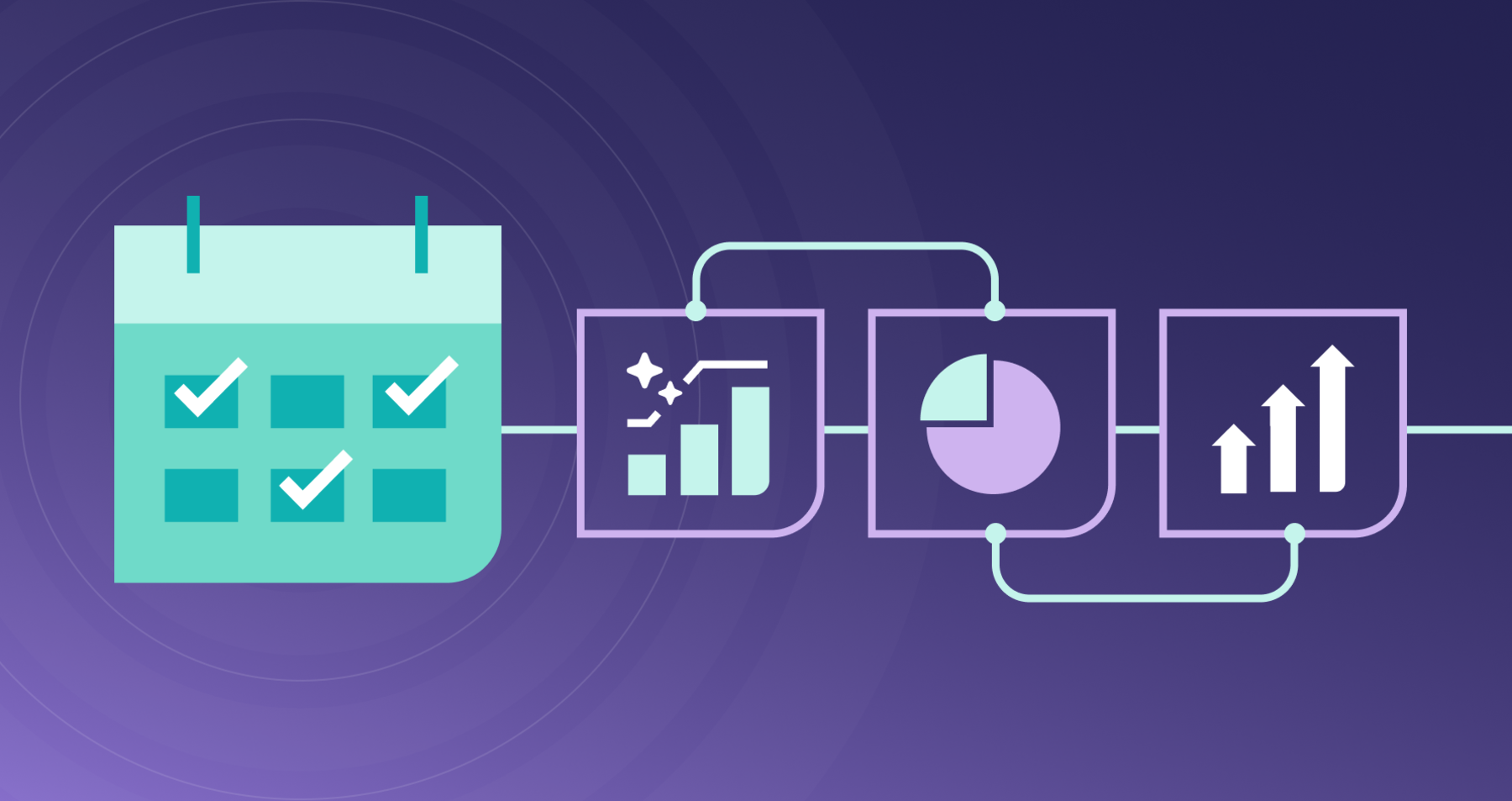Plan smaller than you think you can deliver.
This counterintuitive advice might seem to contradict everything you know about ambitious goal-setting. Yet when it comes to planning your software development roadmap, this principle often leads to greater success. Why? Because effective quarterly planning isn't about cramming in more features or technical objectives - it's about strategically connecting daily engineering execution to long-term product vision.
When organizations transform quarterly planning from a routine exercise into a powerful driver of progress, they discover proven approaches: breaking down ambitious goals into achievable steps, tying execution to company vision, and keeping customer feedback at the core of every decision.
What makes quarterly planning truly strategic?
Quarterly planning is more than just setting goals and priorities for the next few months. It’s about aligning those goals and priorities with the overall vision and strategy of the organization. Quarterly planning should be guided by a clear understanding of the company’s long-term objectives and how each team’s work contributes to those objectives. To that end, strategic quarterly planning should:
- Link daily tasks to high-impact business outcomes
- Break large projects into smaller increments that all deliver value
- Incorporate insights from teams with diverse expertise
- Be rooted in the needs of actual users and customers
- Connect day-to-day execution with long-term success metrics
This approach makes it easier to track progress, adapt to changes dynamically, and celebrate successes that align with the company's vision. At the end of a successful quarterly planning cycle, teams should have a clear set of outcomes and artifacts, such as well-defined objectives, a prioritized roadmap, assigned tasks, and agreed-upon metrics for success. Now, let’s explore how to build and implement strategic quarterly planning that drives results and keeps teams motivated and aligned.
Tips for successful quarterly planning
Through conversations with leaders and peers across industries, I’ve identified some key practices to help organizations of all sizes unlock their full potential during the quarterly planning process.
Align quarterly goals with the bigger picture
A recurring theme in my conversations with Product Managers (PMs) is the need to tie quarterly objectives back to the broader company goals. If you can see how your work fits into the grand scheme, it’s easier to prioritize what matters most. One PM told me, “Quarterly planning isn’t just about getting stuff done; it’s about making sure we’re still heading toward our North Star.”
That’s where a framework like Hoshin Kanri can come in handy. Originating from Japanese management practices, Hoshin Kanri ensures every part of the organization is aligned with the company’s most critical goals. It breaks down big-picture objectives into actionable, measurable steps and cascades them across teams. By linking daily tasks to strategic outcomes, the framework gives everyone on the team a clearer sense of purpose and an understanding of how their work contributes to organizational success.
Pro tip: Utilize a platform that connects company objectives and key results (OKRs) to your product roadmap as a powerful way to create alignment and focus across teams and highlight connections between development tasks and big-picture goals directly within the tool.
Plan less to accomplish more: The art of iteration
Remember that counterintuitive advice from earlier about planning smaller? Here’s why it works: Inevitably, work always expands. Even the most detailed quarterly plans can’t anticipate every challenge, opportunity, or shifted priority. That's why planning smaller delivers bigger results. For teams to succeed, leaders must champion a culture that encourages incremental planning. Empowering teams to think iteratively - breaking down ambitious goals into smaller, achievable steps without fear of falling short - fosters a mindset of learning and adapting to rapid feedback.
Consider vertical slicing: breaking a project into smaller pieces that deliver end-to-end value. Let’s say your team is building a dashboard for tracking product metrics. Optimize your plan to deliver small vertical slices that provide user value in each iteration:
- Build the data pipeline to collect and display one key metric, such as user engagement.
- Add functionality for filtering and sorting the data.
- Introduce visualizations for trends over time.
- Extend the dashboard with customization options based on user feedback.
By delivering functional increments, you allow for smaller reviews, early testing, faster feedback, and incremental value delivery, all while staying aligned with larger goals.
Pro tip: Use your tool's nested work item framework to create clear workstreams and enable efficient progress tracking. For example, in GitLab, this translates to using epics, issues, and tasks to maintain alignment with overarching objectives.
Bring in the entire team early
Planning in isolation - failing to involve contributors early in the process - is a common mistake I see customers make during their planning cycles. Engineers, designers, and other key stakeholders bring unique insights that can shape better solutions and prevent surprises later.
Experts indicate that teams with diverse expertise are more likely to generate innovative ideas. Engineers can flag technical constraints or opportunities early, while designers ensure the user experience remains central to decision-making. Early collaboration reduces downstream friction, keeps the team focused on the problem to solve, and accelerates delivery.
Pro tip: A single end-to-end software development platform with real-time visibility helps teams avoid siloed decisions, collaborate effectively, and ensure alignment from day one.
Keep customer feedback at the heart of planning
Without listening to your customers, you’re navigating based on assumptions. Product owners who regularly engage customers stay closer to what really matters, ensuring that planning decisions are rooted in actual user needs.
This is where another key planning method, Dual-Track Agile, really shines. Dual-Track Agile separates product development into two parallel tracks:
- Discovery, where teams gather insights, validate ideas, and explore potential solutions
- Delivery, where teams build and ship validated solutions
Dual-Track Agile allows teams to focus on gathering insights from users and customers without stopping or slowing down the process. For example, while one team interviews customers and prototypes ideas, another can work on developing features based on validated needs - ensuring that teams are always working on the right problems while maintaining a steady delivery cadence.
Pro tip: Use a tool that supports seamless collaboration, prioritization, and insight-sharing across workstreams so your teams can use customer feedback to inform every decision, keeping work aligned with user needs and business goals.
Measure success with the right metrics
Metrics are more than just numbers - they guide how closely your quarterly objectives remain aligned with your company’s strategic goals.
For development teams, DORA metrics offer powerful insights into efficiency and reliability. Teams can identify bottlenecks, improve workflows, and ensure delivery aligns with planned timelines. When paired with business indicators, such as customer satisfaction and feature adoption, these operational metrics connect day-to-day execution with long-term success.
Adopting a reliable measurement practice helps you course-correct during the quarter and informs the retrospective process. By reflecting on what worked and what didn’t, you can continuously improve your approach to quarterly planning and maintain focus on strategic objectives.
Pro tip: By surfacing DORA metrics and other value stream analytics in a comprehensive insights dashboard, you can easily track the time it takes to go from an idea to production with customizable, data-driven views.
Wrapping up: Make quarterly planning work for you
Quarterly planning isn’t just about organizing tasks or hitting deadlines - it’s about aligning your team’s efforts with your company’s most strategic goals.
By tying goals to the bigger picture, embracing customer insights, and creating a culture of collaboration, you position your organization to meet quarterly objectives and drive long-term growth and success.
Next steps
Navigating a smooth transition to Agile planning
Read our ebook to learn how to streamline your software development with Agile planning for enhanced collaboration, more efficient processes, and comprehensive reporting.
Read the ebookRead our ebook to learn how to streamline your software development with Agile planning for enhanced collaboration, more efficient processes, and comprehensive reporting.
Frequently asked questions
Key takeaways
- Strategic quarterly planning is key to achieving organizational objectives. It aligns resources, focuses teams on high-impact work, and drives meaningful progress toward long-term goals.
- Successful quarterly planning involves aligning goals with the company's vision, incorporating diverse insights, breaking down large projects into smaller increments, and continually tying execution to long-term success metrics.
- Effective planning practices include employing the Hoshin Kanri framework for goal alignment, championing iterative planning, leveraging early team involvement, prioritizing customer feedback, and measuring success with the right metrics.

